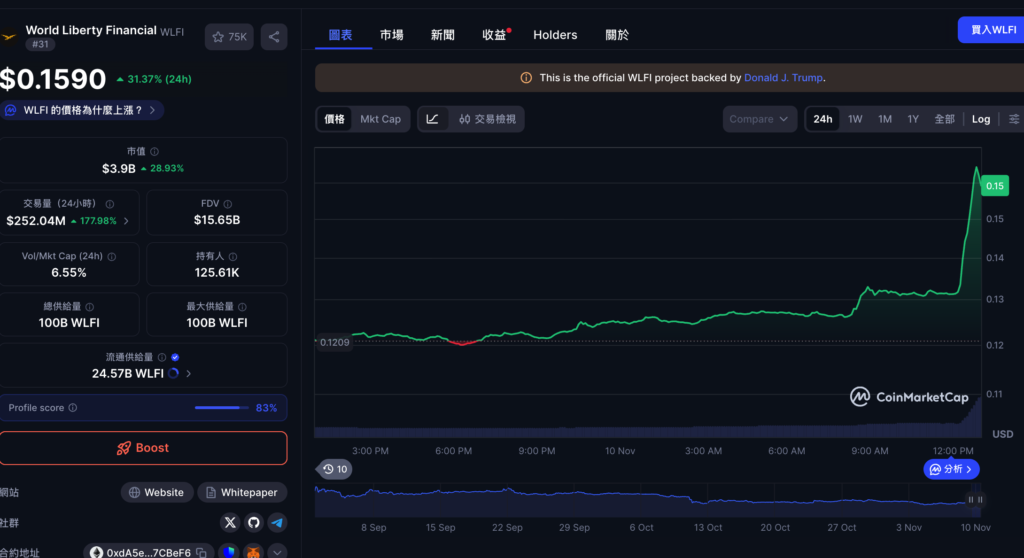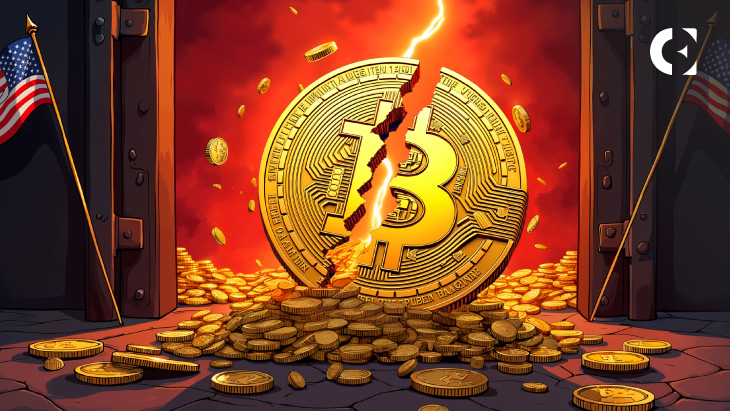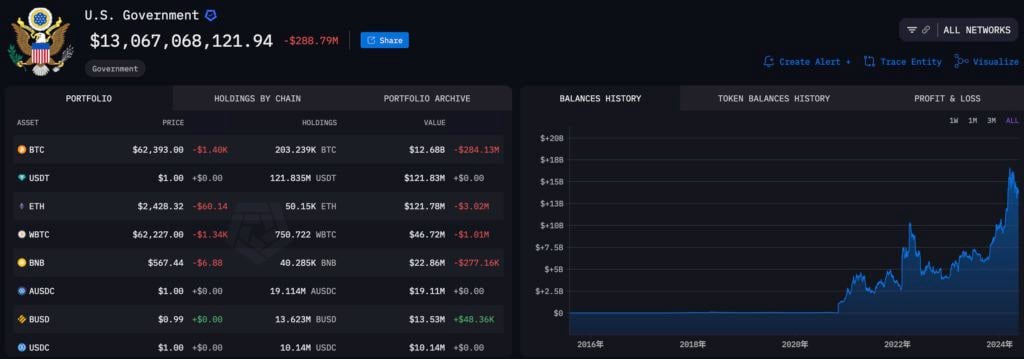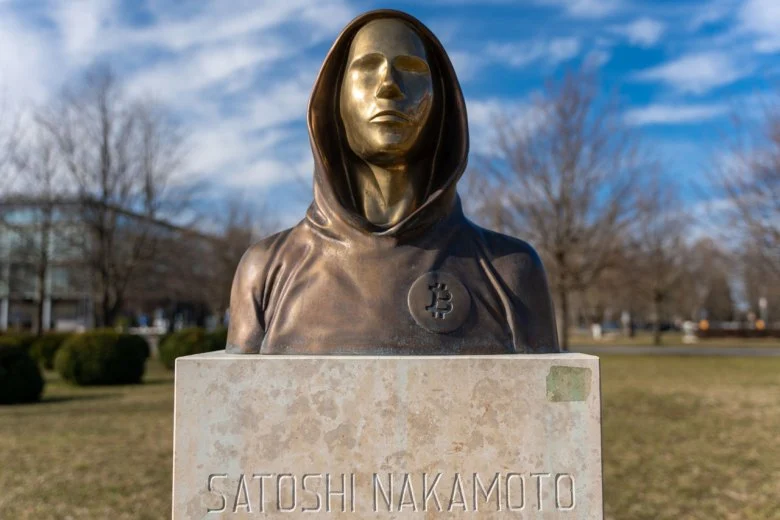The crypto market is undergoing a major transformation, with the era of market maker dominance coming to an end. The liquidations of October 11th and November 3rd severely impacted market makers, and the market is beginning to return to a true price mechanism. The trend towards on-chain integration is clear, and crypto is rediscovering its core values and shedding its parasitic system. This article is based on an article by Zuo Ye, compiled, translated
![图片[1]-Single Point of Crisis: The Time Has Come for Cryptocurrency Market Makers to Step Down from Their Central Positions-OzABC](https://www.ozabc.com/wp-content/uploads/cover-image-market-maker-exit-crypto-new-era-begins-768x512-1.webp)
netThe road effect extends beyond the Internet.
Water and electricity are highly exclusive, making them very suitable for “monopolistic” collective management, which can benefit or harm the whole society. However, the network of relationships between people is naturally distributed and decentralized, and even a super social elite would find it difficult to know everyone.
Is crypto a web of funds, or a arena for interaction between people?
Satoshi Nakamoto clearly believed it was the latter, a peer-to-peer transaction model. Starting from this point, the history of the cryptocurrency world has been about fully embracing the connection of funds as capital appreciates and expands, while reducing direct interaction between people.
The only reasonable question is: how long will this dense network of funds collapse?
Why is the market recovering?
Many people are still reeling from the crashes and liquidations of October 11th and November 3rd, wondering how long it will take for synthetic stablecoins, Vault, and Yield products to recover. However, Hyperliquid’s BLP and HIP-3 growth models are coming one after another, and Framework’s stablecoin YC has been launched on Sky.
There’s also Aave’s sudden arrival of V4 and a mobile financial product app.
In terms of absolute data, the market is indeed in a recovery period, but in terms of personal experience, project teams seem to be innovating by closely following historical trends.
In other words, market cycles have become decoupled from retail investor activity, which is not uncommon. The fundamentals of the US economy have little to do with the real economy. Trump’s only concern is interest rate cuts and stock prices. Americans and the real economy are just one part of the game.
In this cycle, if one still believes in a four-year Bitcoin cycle, then one is simply stuck in a time machine from 2017, like the flash crash of Cloudflare; the crypto infrastructure is constantly changing.
DEXs, represented by Hyperliquid, have indeed taken over the CEX market, especially in conjunction with Meme, which has changed the token valuation, pricing, and distribution system. The era of CEXs is visibly dying out, with Kraken valued at only $20 billion, and many CEXs turning to support their own DEXs.
When high FDV impacted Binance’s pricing system in 2024, VCs were already dead, and then it became the era of market makers: Hyperliquid and other Perp DEXs were backed by market makers, as were many YBS projects.
SBF came from Jane Street, Jeff came from Hudson River Trading, and the founder of Variational came from the market-making department of DCG.
Even during the ADL liquidation on October 11, market makers were the first to be affected. Fortune and misfortune are intertwined, and the market structure dominated by market makers becomes more rigid and rigid more quickly than that dominated by CEXs.
Web3Port’s frantic dumping of tokens manipulated the price, DWF’s repeated manipulation of token prices, and even Hyperliquid’s HLP faced similar accusations. Whether it’s a centralized market maker or a decentralized vault, anyone participating in a market-making system cannot escape the suspicion of market manipulation.
If we call the current market structure a “recovery,” then market makers have been severely impacted, rendering them unable to continue manipulating the market, which in turn has led to market stabilization.
This is not uncommon. Before FTX collapsed in 2022, there were rumors that Alameda once held 20% of the market-making share in the BTC market. In the SBF & FTX biography “Towards Infinity”, SBF admitted that they were the earliest professional company to make large-scale market-making.
![图片[2]-Single Point of Crisis: The Time Has Come for Cryptocurrency Market Makers to Step Down from Their Central Positions-OzABC](https://www.ozabc.com/wp-content/uploads/自动草稿-2.png)
Image caption: BTC liquidity plummets
Image source: @KaikoData
Returning to the flash crash of October 11, from the perspective of market makers, it was a purely technical crisis, or rather, the trading liquidity before that was a technical golden age: there were no retail investors trading, but market makers buying and selling.
![图片[3]-Single Point of Crisis: The Time Has Come for Cryptocurrency Market Makers to Step Down from Their Central Positions-OzABC](https://www.ozabc.com/wp-content/uploads/自动草稿-1.jpeg)
Image caption: Sharp drop in liquidity on October 11th.
Image source: @coinwatchdotco
The existence of market makers is not a problem in itself, but for altcoins or new TGE coins, it means a huge sell-off. Airdrop hunters, arbitrageurs, and even VCs and project teams themselves will resolutely sell to market makers to lock in profits.
Market makers are caught in a dilemma: if they don’t manipulate the market, they will inevitably absorb all the worthless coins, or they will become the Lich King, increasing market volatility as much as possible to make a little money for themselves and occasionally let market participants make a little money as well.
![图片[4]-Single Point of Crisis: The Time Has Come for Cryptocurrency Market Makers to Step Down from Their Central Positions-OzABC](https://www.ozabc.com/wp-content/uploads/自动草稿-3.png)
Image caption: Mainstream market makers’ positions
Image source: @arkham
The reasoning here has a major flaw: it only shows the composition and changes in market makers’ positions, making it difficult to analyze in detail how they manipulate the price within the CEX. Data from DEXs like Hyperliquid is relatively transparent, and we’ll leave that for future analysis.
In summary, the market is not experiencing a rebound, but rather a situation where market makers have suffered heavy losses, coupled with the successive collapses of the YBS project, rendering them unable to manipulate the market. Now, the true price mechanism is at work.
There is no recovery, only honesty.
The 70% Law of Natural Monopoly
The various sub-sectors of crypto have revealed products with “natural monopoly” characteristics, such as EVM. In contrast, the Bitcoin network as infrastructure has failed. Everyone desires BTC, but no one wants to engage in P2P transactions.
Aside from proponents like Jack Dorsey who insist on using the Bitcoin network as a stablecoin chain, the pipe dream of BTCFi has been real and tragic enough. Stopping the speculation about it will benefit the entire industry.
Aside from EVM, only Binance and USDT are close to the concept of “monopoly” as super single products. Note that this does not conflict with the impact of DEX on CEXs, or the innovative impact of USDC/USDe/YBS/Curator.
Super Item ≠ Track
In other words, Binance and USDT are working hard to resist entropy increase, while Ethereum, after experiencing a series of self-destructive actions (Infinite Garden, L2 scaling -> L1 scaling), and even now turning to privacy and AI, which emphasizes doing whatever it wants, is still the mainstream choice.
However, Binance and USDT’s market share, and even Hyperliquid’s share on Perp DEX, have peaked at around 70%, and more market actions are needed to solidify their current positions.
![图片[5]-Single Point of Crisis: The Time Has Come for Cryptocurrency Market Makers to Step Down from Their Central Positions-OzABC](https://www.ozabc.com/wp-content/uploads/自动草稿-4.png)
Image caption: Market share under a stable market structure
Image credit: @GLC_Research @defillama @SPGlobal
Based on experience, in a stable market structure, the top projects can occupy 70% of the market share in this sector. However, the market environment changes over time, and currently, the market share of Hyperliquid, USDT, and Binance has all dropped below 50%.
Of course, EVM is absolutely stable in the overall VM track, with only a very few competitors such as SVM or Move VM, which can be regarded as entering an ultra-stable structure.
![图片[6]-Single Point of Crisis: The Time Has Come for Cryptocurrency Market Makers to Step Down from Their Central Positions-OzABC](https://www.ozabc.com/wp-content/uploads/自动草稿-5.png)
Image caption: Mainstream market makers
Image source: @coinwatchdotco
Looking at market makers from this perspective again, we know that there are at most 20 mainstream market makers, and we speculate that they occupied the mainstream market position before October 11. However, they did not achieve a natural monopoly. Even if they forcibly maintained it, they are now at their limit.
So how will the market structure change in the next stage?
The transition between generations is underway.
- Taking the traditional financial approach means being limited by traditional financial valuation models.
- The path of becoming an internet fintech company is limited by the scale and valuation of the internet.
- Only by forging a path suitable for cryptocurrency valuation models and breaking free from any existing industry definitions can a company, like AI, generate a top player with a valuation of 5 trillion.
The market has been quite strange lately. Solana, as a pioneer in RWA and institutional adoption, has suddenly announced that its foundation chair, Lily Liu, wants to revive the crypto punk dream, combined with Ethereum’s return to the L1 scaling route and the privacy concept mentioned earlier, making Zcash incredibly popular.
Crypto seems to be rediscovering the technological logic and valuation system of the crypto world, and these have less and less to do with market makers. Even when institutions adopt it, it’s more about “crypto projects using institutional funds to do DeFi” rather than “selling crypto DeFi to institutions”.
In short, internally, get rid of MM (presumably referring to a specific organization or group); externally, get rid of the organization.
Even OGs have to keep up with the new era. DAT, co-sponsored by Li Lin and Xiao Feng, was stillborn. After breaking through Chinese venture capital, the Big Name effect of OGs is also coming to an end.
Encryption is reclaiming its dreams, at the cost of shedding the parasitic systems that underpin it.
Referring to the most mature US capital market, A16Z is part of the US capital market, but Chinese VCs are not. Only the government, state-owned enterprises (state-owned capital groups), and Internet companies (previously) had money.
Reflecting on the situation of Chinese VCs in Web3, they lack the ability to participate in market pricing and distribution systems. Market makers and CEXs used to be able to, but after 10/11, the trend of on-chain integration in the industry has become increasingly clear.
On-chain ≠ Decentralization.
Hyperliquid, for example, is transparent on-chain but not decentralized in terms of physical nodes and token economics.
Even in the reality of state-owned enterprise capitalization reform, it is not simply about selling the old and replacing it with the new, but about investing in new industries and exchanging it for a ticket to a new world.
From this perspective, the biggest problem for market makers is similar to that of memes: liquidity has no value. In the extreme, nihilistic PvP, they make a fortune, but market makers cannot become the dominant force in the industry.
Vitlaik has done too much in terms of dreams and long-term technological vision, while MM has done too little. It’s better to be more moderate.
Conclusion
Essentially, this article is written for myself. Theoretically, the market should have stagnated after October 11th and November 3rd, but the decline in TVL did not hinder DeFi’s innovation and self-correction, which I find puzzling.
Vault, YBS (interest-bearing stablecoin), and Curators are still evolving. The market is more resilient than we imagine. If we still hold onto the same mindset we had a month ago, or even a week ago, we won’t understand the market.
In the post-MM-dominated era, the balance between cryptocurrency values and product profitability will redefine valuation logic.





















